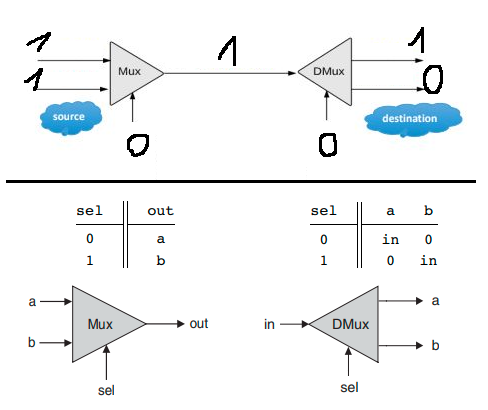Hi!
First of all sorry for my English.
On the lecture was said that the multiplexor and demultiplexor performs opposite functions and this property can be used in communications networks.
I'm not sure if I fully understand this. I think when we put two ones as input to the multiplexor and then try to invert this process using demultiplexor there will be a problem because one of the ones will turn into zero. I will show what I mean in the example (I set selection pins arbitrarily to zeros):

I don't understand something important? Or maybe that thing that was said on lecture about performing opposite functions and how communication network works was just some sort of simplification?